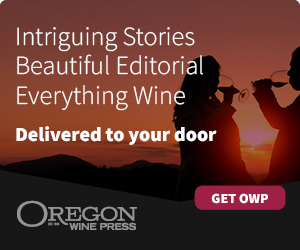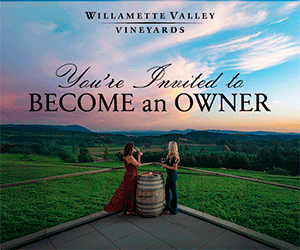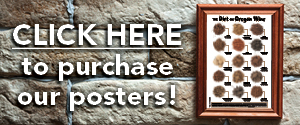Tasting with Intent
Wine Demands Our Presence and Focus

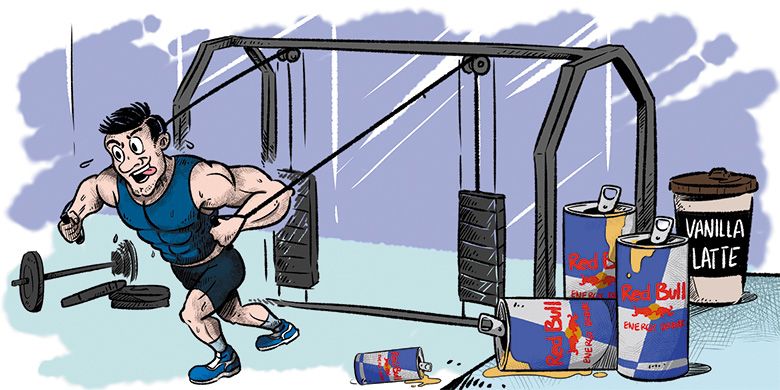
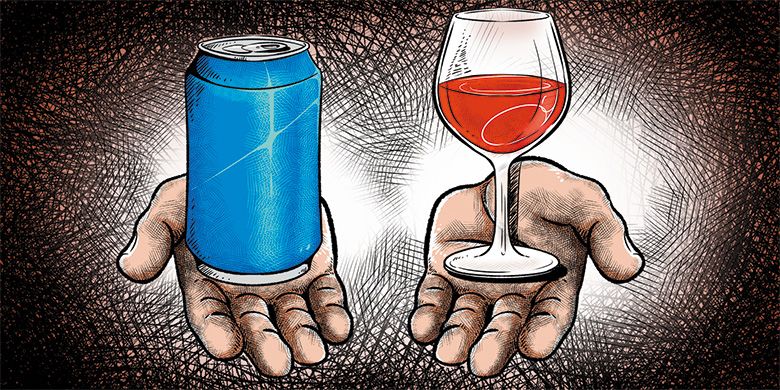

By Luis Romero
When I first began teaching wine courses at the university level, I received a packet of PowerPoints from the instructor who designed the course. One of them referenced the French paradox, featuring a cartoon with an “American” gorging on a burger, his belly practically splitting the buttons of his shirt, while his French counterpart, cigarette dangling from his lips and glass of red wine in hand, enjoyed a decadent meal with enviable ease.
Cartoons exaggerate, yes, but they capture the essence of an argument– hopefully in a thought-provoking way. For those unfamiliar, the French paradox refers to a 1992 study linking France’s low coronary heart disease mortality to wine. The findings suggested red wine might act as a protective factor against a diet high in fat consumption. It caught on like wildfire. I remember seeing talk shows and glossy magazines touting the “health benefits” of red wine, with resveratrol, an antioxidant in grape skins, presented as the magic bullet. Proof, apparently, that wine was not only delicious but also medicinal, a belief dating back to the Middle Ages.
Later studies, of course, challenged those claims. Resveratrol’s effect is negligible at the levels in a glass of wine. Now we’ve swung to the opposite extreme. The modern consensus in public health messaging declares alcohol in any amount is a carcinogen, with no safe consumption level.
Today, that cartoon might be someone pumping iron surrounded by discarded cans Red Bull energy drink and a disposable cup with “Vanilla Latte” scribbled on the side. The image implies alcohol is bad, yet mainlining liquid sugar, caffiene, horomone replacement therapy (and an array of longeivty and vitality supplements) in the form of flavored syrup is apparently fine. Like the French paradox cartoon, it’s a caricature, demonstrating how polarized, moralistic and click-driven the conversation has become.
Debating the back-and-forth of scientific studies could fill a thesis. My point is simpler: reality is nuanced… and nuance rarely makes the headline. For me, the best rule is still the old one: everything in moderation, including moderation.
More Than a Health Debate
Responsible wine consumption, like any sensory-driven act of food and drink, can be deeply meaningful. Whatever health consequences, whether aggrandized or villainized, pale in comparison to the benefits of mindfulness, presence and the ability to ground ourselves in our own bodies.
We live in a world where our attention is under constant assault– a word I do not use lightly. Whole industries, and much of the global economy, thrive on distraction. The goal is not only to sell you something, but also to hijack your attention long enough that you forget you even had a choice. Against that backdrop, tasting wine slowly, recognizing thresholds of sweetness, acid, tannins and observing your perceptions, is almost radical. Doing so forces you back into your senses, a reminder you have a body.
Wine as a Living Process
Wine is beautiful. It’s alive, evolving in the bottle and glass. No two sips are quite the same. Oxygen works like alchemy; this is why sensory analysis and palate calibration aren’t solely professional tools, but life skills.
They shouldn’t belong exclusively to the “serious” wine crowd, but to anyone willing to slow down, taste with care and respect what’s in the glass. Craft winemaking is precious, too full of human labor and land, to be reduced to a casual gulp or an elitist exercise.
I adore watching students or guests discover their aha moment– when they don’t merely understand a concept, but fully experience it. When acidity creates a mouthwatering delight, when tannin grips the tongue, when sweetness softens the jaw. Their posture visibly changes and their eyes light up. It’s transcendental and never gets old.
In my September article, titled “Music to My Taste Buds,” I outlined the steps of sensory evaluation, describing the process itself. Now, I want to delve further into the experiential outcomes.
The Red Pill
At some point, we all face a choice about how to approach wine– and, if we’re honest, life, too. We can consume it passively, distractedly, like background noise. Or we can choose to engage, pay attention and taste with intent.
Consider it a “Matrix” moment. Take the blue pill, and wine is just alcohol: a glass to take the edge off, a social lubricant, a buzz before bed. You wake up the next morning, a little dehydrated, and life goes on exactly as it was.
Take the red pill, and wine becomes something else. A tool for mindfulness. A way of slowing down, perceiving thresholds and engaging your senses. Rather than an escape from reality, we step deeper into it.
I’ve watched countless students take the red pill without realizing it, and suddenly, wine’s abstract jargon becomes embodied truth. Their laughter, their wide eyes, it’s not merely wine they’ve tasted, but presence. Those are the moments that keep me teaching.
Let’s Set the Table
John and Mary are planning a date night at home. John foraged at the supermarket, picking up cheese, a baguette, grapes, preserves, dried figs, honeycomb, lavender oil and tapenade. He’s a true modern hunter with credit card in hand and at the mercy of Whole Foods’ choices. The last few weeks have been hectic: work, family, endless commitments, leaving them scrolling on their phones at night, feeling more like roommates than partners.
John, desperate to bridge the gap, got the idea from a Valentine’s Day reel. (The irony being the same platform stealing his attention offers the solution to reclaiming it.) Mary picked up a bottle of wine, a selection made while ambushed by Brenda, a coworker who recently visited Oregon wine country, eager to tell anyone within earshot about her tasting trip… whether or not they were willing to listen.
Now here they are. The couple could eat quickly, sip distractedly and binge Netflix, treating wine like flavored water. Then awake in the night with heartburn and mild regret. Or they could choose a different path.
Mary took a wine appreciation course in college. She remembers how acidity plays against fat, how tannin softens with salt, how sweetness balances. She offers to guide John through the pairings. He listens, curious, realizing every adjustment makes his food and wine taste better. They look at each other, first with a laugh, then with attention. They talk, share, and refill with water alongside the wine to extend the evening and continue their conversation. They go to bed without touching their phones, as a couple, for the first night in a long time.
The Verdict
In the last “cartoon,” plenty can be argued. Yes, maybe the brie gave them heartburn at 2 a.m., say the Reddit warrior mainlining liquid sugar. Perhaps the entire story sounds cheesy (pun intended). But they created connection, presence, intimacy– all due to a bottle of wine Brenda insisted Mary buy– and approached with mindfulness and a sensory presence.
That’s the cartoon I would draw; not the French paradox, not the latte-fueled puritan crusade, but two people reconnecting in a noisy, distracted world through the act of tasting.
Wine doesn’t need to be a miracle drug or the villain. When consumed with presence, the beverage becomes something else entirely: a practice, a mirror, a way to calibrate not only your palate but also your attention.
And that, in my opinion, is worth the price of a glass of wine.
Luis Romero, M.S., M.A., is a wine, beer and spirits educator, certified sommelier, beverage specialist, and owner of the International Beverage Academy, an approved program provider offering WSET certifications in English and Spanish to professionals and enthusiasts alike. With more than a decade of university teaching and beverage education experience, Luis has spent his last two summers working in wineries across the West Coast. This season, he’s pouring at Elk Cove Vineyards while preparing for his WSET Diploma exam. His writing has appeared in Bon Appétit, Plate Magazine, among other digital and printed publications. His passion for life is only rivaled by his desire to learn and share new experiences with readers and loved ones alike. Sign up for his online courses at www.beveragecertified.com.


